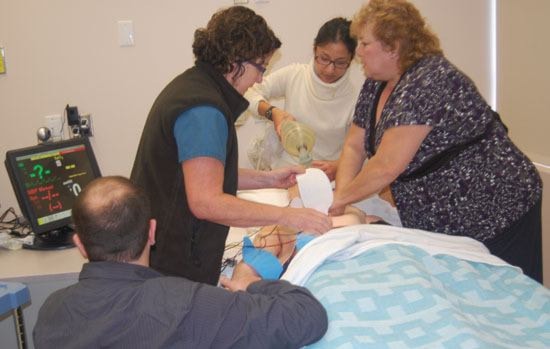MEDICAL STUDENTS, nursing students and other health workers can now make as many mistakes as possible before learning the correct way to do a procedure on a patient.
That comes with the installation of three medical simulators at Mills Memorial Hospital: an adult man, adult woman and infant.
The simulators let medical staff run through different scenarios to practise what to do when they see patients with the same problem.
To demonstrate, nurses and a student nurse did a post heart attack scenario on the male simulator at the official unveiling of the simulators Nov. 3. Registered nurse Orie Shiga listened to the patient’s heart, which she could actually hear on the simulator through her stethoscope.
She called a code because the patient’s heart rate went into ventricular fibrillation, in which the heart beats with rapid, erratic electrical impulses so the pumping chambers (ventricles) quiver uselessly instead of pumping blood. It can happen because the heart muscle goes into shock and often doesn’t have the same strength after a heart attack, said Shiga.
Sherry Warren, nurse educator, Barb Caldwell, the head nurse in critical care, and UNBC student nurse Mike Prevost jumped in to assist and do CPR while Shiga gave the patient oxygen.
They used a defibrillator, a device which shocks the heart back to its normal rhythm.
“It’s kind of like rebooting it,” said Shiga afterward. The simulators are available to students and are so realistic the nurses said they could feel its heartbeat and pulse. It can also be programmed to talk or an instructor can talk through it. And students can also assess its blood pressure and put in I.V. tubes.
Scenarios can be written so a real incident can be practised with the simulators.
“They can replicate a daily or rare occasion,” said Trevor Hunter, district manager for Laerdal, the company that makes the simulators. After practising with it, students can then talk about what they’ve done with instructors, he said.
